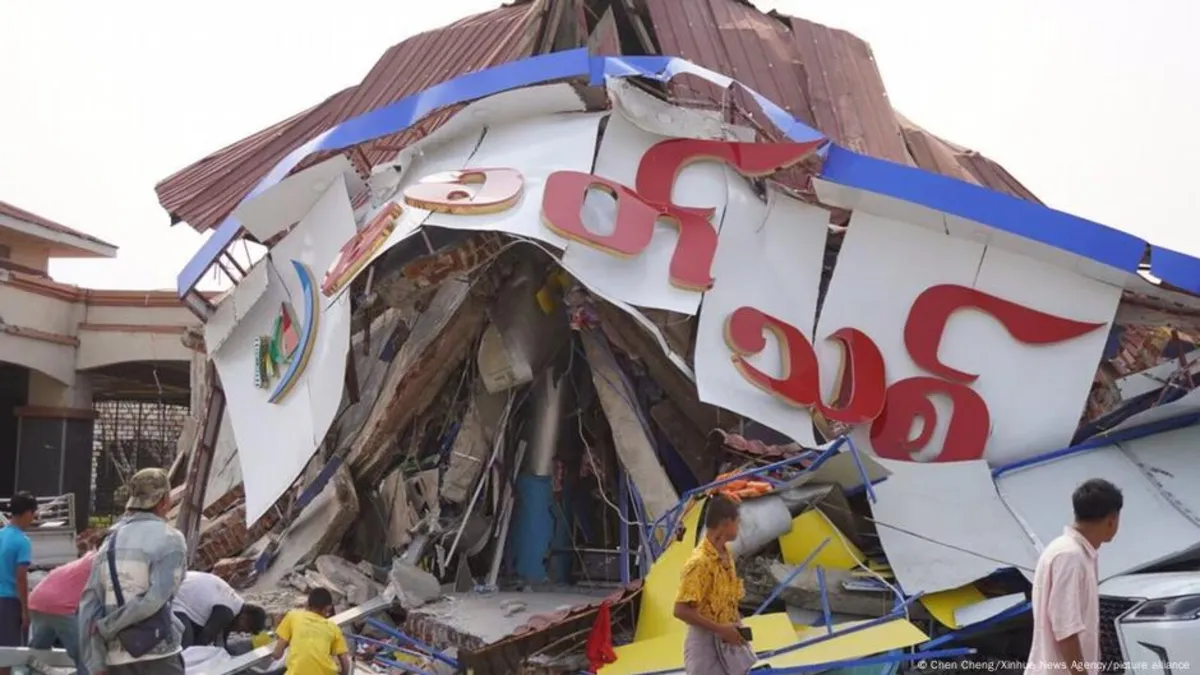
On March 29, 2025, Myanmar's military junta reported a tragic increase in the death toll from a devastating 7.7 magnitude earthquake that struck the nation on Friday. The confirmed fatalities have now risen to at least 1,644, with over 3,400 individuals injured. Rescue operations are ongoing as international teams arrive to assist in the search for survivors amidst the wreckage.
The powerful earthquake hit central Myanmar, sending strong tremors felt as far afield as Thailand and China. In addition to the rising death toll, the junta noted that approximately 139 people are still missing. The earthquake wreaked havoc across the region; buildings collapsed, bridges were destroyed, and roads buckled, particularly affecting Mandalay, the nation’s second-largest city with a population exceeding 1.7 million.
Rescuers in Mandalay pulled a woman, Phyu Lay Khaing, 30, alive from the rubble of a collapsed apartment block. Reports indicate that more than 90 people might still be trapped in the wreckage of the Sky Villa Condominium, where half of the 12-storey structure was flattened.
In the wake of this humanitarian crisis, several countries, including India, Indonesia, France, and the United States, have stepped forward to offer assistance. India's Foreign Ministry confirmed that aid flights carrying essential supplies have begun arriving in Myanmar, marking a significant shift as the military junta issued a rare appeal for international aid.
Indian Foreign Minister, Subrahmanyam Jaishankar, announced that the first aid flight included hygiene kits, blankets, food parcels, and a search and rescue team. Additional aircraft with further supplies and a field hospital are also en route to support relief efforts.
Beijing has pledged 100 million yuan (about $13.77 million) in emergency humanitarian aid, set to include tents, blankets, and medical supplies. China's swift response underscores the severity of the disaster and the international community's commitment to helping Myanmar recover.
In a further show of solidarity, the Association of Southeast Asian Nations (ASEAN) has also offered support, affirming its commitment to coordinate humanitarian assistance and facilitate relief operations in collaboration with Myanmar and Thailand.
Myanmar's current humanitarian situation, compounded by a civil war that erupted following the military coup in 2021, has made rescue operations particularly challenging. Many regions remain unsafe for aid groups to access due to ongoing conflict. Reports suggest that military forces continue to engage in combat, hindering relief efforts in severely affected areas such as Mandalay.
Additionally, the United Nations has indicated that over 20 million people are currently in need of assistance, and more than 3 million have been displaced due to ongoing violence. The earthquake has exacerbated this existing crisis, making timely and effective aid more critical than ever.
Despite the challenges, rescue teams are tirelessly working to locate survivors. In Bangkok, where a high-rise building collapsed, rescuers reported detecting signs of life among those trapped beneath the rubble. Thai authorities continue to coordinate efforts to ensure that all possible assistance is provided to those in need.
The situation remains fluid, and updates on the earthquake’s aftermath and the ongoing rescue operations are being closely monitored. As the international community rallies in support, the people of Myanmar face an uphill battle in recovering from this devastating natural disaster.